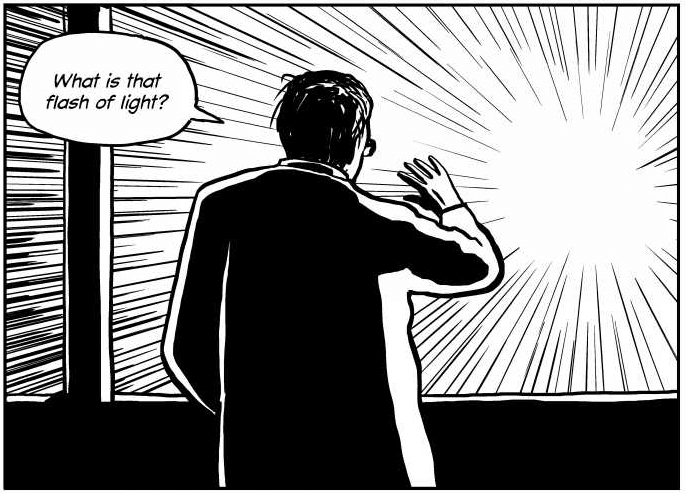About Om Mani Peme Hum Mantra
OM MANI PEME HUM. This ancient Sanskrit mantra has been used for healing purposes for thousands of years. At the Buteyko Breathing Center, we use it as a tool for breathing and health improvement. It is proven to help people with various breathing difficulties, for example, asthma or anxiety, as well as many other health problems. Please visit the learn page for information about Buteyko Breathing Normalization programs.
The Healing Through Breathing: The Ancient Mantra CD contains recordings of a traditional chant performed by elderly Tibetans together with the founders of the Buteyko Breathing Center. In order to gain the most benefit from this CD, we recommend that you familiarize yourself with the history and basic principles of the Buteyko method which is described in short on this page. Enjoy, and please remember: There is no health without healthy breathing!
About Buteyko Breathing Normalization
The Buteyko Breathing Normalization method is based on the work of Konstantin Buteyko, a Russian medical doctor and scientist. In 1952, he discovered that over-breathing was the major cause of various diseases, including asthma, anxiety, allergies, high blood pressure and many others.
At this time Buteyko was a young doctor who worked at an elite hospital in Moscow. During his time in medical school, he specialized in hypertension, also known as high blood pressure. Ironically, he developed a severe form of this disease himself, which left him plagued by frequent migraines and constant pain in the heart and kidneys. Over time this condition worsened, despite the fact that he was taking the best medicine available. By the fall of 1952, Dr. Buteyko was convinced that he had only a couple of months left to live. Nevertheless, he continued working.

One night during his nighttime shift, he was alone, standing in front of a window and looking up at the star-filled sky. His mind was racing with questions. What is the cause of my disease? Why do people become ill? Suddenly, a blinding light flashed outside the window. Dr. Buteyko had to lower his gaze to shield his eyes. Looking downward to regain his vision, he noticed that his chest and stomach were moving a great deal as he was breathing. It is common medical knowledge that heavy breathing is a symptom of hypertension, but at this moment, Konstantin had an idea, which he later described as odd. Could it be, he thought, that my heavy breathing is not the result of my disease but the cause of it?
Ever the unwavering scientist, he immediately began experimenting on himself. First, he decreased his breathing by making an effort to breathe more gently. Within a few minutes, his headache, along with the strong pain in his chest and kidneys, began to subside. Second, he intentionally increased his breathing by switching to heavy mouth breathing. His pain came back almost immediately. This was a pivotal moment for Buteyko, one that resulted in a ground-breaking medical discovery.
Many years later, Dr. Buteyko stated that within these first minutes of his discovery, the whole chain of cause and effect appeared before his eyes. He thought: Over-breathing depletes the level of carbon dioxide in the lungs. The Verigo-Bohr effect (an established law of physiology) states that an adequate level of carbon dioxide is necessary for proper oxygen delivery to cells, tissues and vital organs. Therefore, when a person over-breathes, oxygen delivery is decreased, and the body enters a state of oxygen starvation.
Dr. Buteyko realized that depletion of CO2 caused by over-breathing causes spasms in smooth muscle tissue all over the body, including the airways, blood vessels and intestines. It became clear to him that many diseases associated with contraction of blood vessels, including high blood pressure, coronary artery disease, heart attack, stroke and ulcers all stem from a single cause: over-breathing.
During the course of his research, Buteyko also discovered that hyperventilation changes the pH or acid-base balance, which causes a disturbance in the metabolism. Dysfunctional metabolism turns normal immune reactions into allergic reactions, which told him that allergies could also be caused by hyperventilation, as well as high cholesterol, obesity or emaciation. Hyperventilation also weakens the immune system, leading to colds, flu and other more serious diseases. Dr. Buteyko’s research led him to conclude that the metabolic disorder can become so severe as to result in the development of tumors. He thought: This means that over-breathing could cause even cancer!
Furthermore, Dr. Buteyko eventually concluded that many symptoms of various diseases are the body’s compensatory reactions against the loss of carbon dioxide caused by over-breathing. For example, in asthmatics, the body creates a bronchospasm, or narrowing of the airways, in order to slow down the breathing, thereby protecting against further loss of carbon dioxide, which could be not only dangerous but lethal.
After making this groundbreaking discovery, Buteyko immediately set out to test his hypothesis on asthmatic patients. That night he went to the department of pulmonology where an asthmatic, fighting suffocation, was gasping in the attempt to get as much air as possible. Slow down your breathing and breathe less. Buteyko suggested. But doctor, you’ve always told me take a deep breath! I know, I was wrong. Please breathe more gently, and through your nose, Dr. Buteyko insisted. After a few minutes of slowed breathing, the patient was able to breathe better, and his face regained some color. The asthma attack receded. Both men were surprised at how quickly it was defeated.
Dr. Buteyko’s initial realization was followed by many years of teamwork by Russian doctors and scientist, generously funded by the government of the Soviet Union. This resulted in the creation of a unique drug-free method, which since then has been saving lives and improving the health of countless people all over the world. In the Western world, this method is known as the Buteyko Breathing Normalization method. Its key element is health improvement through elimination of over-breathing (or hyperventilation) through reduction of air consumption. An air diet, so to speak.
It sounds counter-intuitive that excessive deep breathing decreases oxygenation of the body and worsens overall health, and yet it is proven by science that healthy breathing (gentle, quiet breathing through the nose) increases overall oxygenation of the body and greatly improves health. So, don’t take a big breath through your mouth! Breathe Less!
The Control Pause
modal3
In order to evaluate a person’s breathing and health, Dr. Buteyko created a simple measurement known as the Control Pause, which indicates the level of carbon dioxide in the lungs. It is imperative to learn to measure the Control Pause to be able to use any breathing exercises effectively, especially the Om-Mani-Peme-Hum chant.
The Control Pause is the length of time a person can comfortably go without taking a breath following a light exhalation. The ability to sense the point at which comfort turns into something less than comfort is one that takes weeks of practice to develop. So there is no expectation that anyone will be able to do this perfectly right from the start. But the goal is to learn to sense the moment at which the body wants to breathe in. Again, this is quite a subtle distinction, and one that takes time to develop. No one does it perfectly at the beginning, and this will not reduce the benefits you get from the breathing exercises.
To measure your Control Pause, sit in a chair with a hard surface and keep your back straight. Keep your mouth closed throughout the whole measurement period. First, gently inhale and exhale a few times, paying attention to your breathing. Then, block your nose after exhaling, and stop breathing. Time the number of seconds you are able to stay without air. When you feel the need to breathe again, open your nose and gently inhale, keeping your mouth closed.
We recommend that you start chanting the Om Mani Peme Hum mantra out loud only after your Control Pause has reached 15 seconds. Before that, you can still benefit from this chant by listening to it and repeating the mantra quietly in your mind.
The Mantra as Breathing Training
Om Mani Peme Hum is the most famous Tibetan Buddhist mantra, and is known for its healing qualities. It normalizes a person’s breathing by pacifying the mind. Dr. Buteyko was the first formally trained medical practitioner to discover this effect. He noticed that this mantra was capable of reducing over-breathing or hyperventilation, and that could stop an asthma or panic attack.
This recording is good background music for anyone whose mind tends to get hectic and lose its natural state of harmony and peace. One of Breathing Center’s clients who suffered from anxiety, depression and breathing difficulties listened to this chant every day for approximately forty minutes while driving to her office in the morning, and then driving home in the evening. The Om Mani Peme Hum mantra became her mental anchor. It kept her rooted against the unruly waves of life, which had been disturbing her inner peace, and had been causing breathing problems. It kept her functional in her life.
Breathing Center’s students often play this recording when sitting in front of a computer or taking care of household chores. The mantra does its gentle work by creating a serene atmosphere filled with love.

When you are ready to start chanting this mantra out loud, please remember that your breathing needs to remain relaxed and gentle throughout the whole chant. Keep your attention on the chant, but don’t lose awareness of your breathing. This chant is water-like: soft, yet very powerful.
In using Om Mani Peme Hum as a tool for breathing and health improvement, always remember the main rule: Inhale through your nose only! Never inhale through your mouth!
Why? A human body perceives inhalation through the mouth as stress. Prolonged mouth breathing can have a strong negative effect on our health. For human beings, it is natural to breathe through the nose – the second option of mouth breathing is intended for emergency situations only. The nose is the organ which conditions air for our consumption – the same as the stomach prepares food for our digestion. Dr. Buteyko often said, Breathe through your mouth only as often as you eat through your nose!
At the Breathing Center, students undergo a specific training, which teaches them to maintain gentle nasal breathing 24 hours a day – whether waking or sleeping, during physical exercise, while talking, eating and so on. It takes a while to establish this healthy pattern of breathing, but this chant can be very helpful in reaching that goal.
So, how do you breathe through your nose while chanting? As you listen to the recording of the chant, you might notice that the interval between inhalation and exhalation is rather long. Please don’t try to match this long period of breath retention when you’re just starting. It will come naturally after a while – possibly after several weeks of practicing.
If you feel that you need to inhale, but force yourself not to, you will intensify the need to breathe, which creates tension. Since this tension triggers hyperventilation, this is the opposite of what we are trying to achieve. Therefore, the other important rule is Stay Relaxed! Do not try to hold your breath longer that your body can comfortably manage.
The idea of chanting without inhaling through the mouth can be confusing at first. On the one hand it’s simple, but it does take getting used to.
To begin, gently inhale through your nose. Then say the mantra on your exhalation until you are close to the moment when you are out of breath. Then, gently inhale again and repeat the process. If your Control Pause is not substantial yet, you might not be able to chant all the mantra syllables before you run out of air. Don’t worry. If you need to inhale in the middle of the mantra, just do it. Most likely you will miss a few syllables, but this is perfectly acceptable.
If you find that this breathing training is too challenging, you will need to do a preliminary exercise to work up to it. For this, you can use Om Mani Peme Hum or any other short mantra, for example, Om. Gently inhale through your nose and say on exhalation, Om, Om, Om, Om, etc. – until you almost run out of air. Then gently inhale through your nose again, and continue. Never allow yourself to run out of air completely since this can make you gasp for air and will cause over-breathing.
To be able to inhale through your nose while chanting the mantra, it is essential to be able to slow down your mind. Hectic thoughts and emotions always create a tendency for mouth breathing, and move you away from gentle nasal breathing. So take a few minutes to relax before you start chanting.
With practice, this new pattern of gentle nasal breathing will feel easier, to the point where it eventually becomes natural. At this point, this recording will become even more effective for your breathing and health improvement. If you continue measuring your Control Pause, you will observe that after this chant, it will rise significantly. It might increase by 5-10 seconds, though with diligent practice over time, many people experience an increase of 40 seconds or even more. The increase of the Control Pause always indicates a successful effort to boost your breathing and health.
We recommend doing this chant for 15-30 minutes any time of day, but especially in the evening before going to bed. It will help to erase disturbing concerns that accumulate during the course of the day, and will help to clear your mind. It will also increase your Control Pause, and as a result you will sleep more peacefully because you’re maintaining healthier breathing throughout the night.
Dr. Buteyko’s approach to health is directly linked to spirituality. He discovered that genuine spiritual rituals, no matter what tradition they belong to, modify the breathing, making it gentler. He also found that altruistic thinking and a selfless motivation to help others increase Control Pause and improve overall health. And of course this way of thinking is a core philosophy of any genuine spiritual tradition.
The meaning of the Om Mani Peme Hum mantra reflects this altruistic mode of thinking. Its translation from Sanskrit is rather complicated, to the point that scholars have written volumes in attempts to explain it. However, the simplest interpretation is Compassion for all. By chanting this mantra, you express infinite compassion for all beings, regardless of belief systems, nationality, appearance or even actions. This includes all humans, animals and insects, even ghosts and other creatures who are beyond our comprehension. Focusing on this notion enhances self-acceptance and contributes to establishing peace and harmony throughout the universe.

Body posture during a chanting session is important. Keep your back straight. This posture supports healthy gentle breathing. Sit on the edge of a chair with a hard surface, or on a meditation cushion. Sitting on a cushion with your legs being crossed, or even in a full-lotus position if you can manage it, is ideal as it creates the best position for breathing. Also, rolling your eyes up while imagining something above your head reduces breathing. In fact, some people are even able to stop hyperventilation attacks by simply straightening the back and lifting eyes up.
Traditionally, imagination is used along with chanting because engaging the mind increases the positive effects. Imagining the blue sky and the bright sun above the head is not a difficult task even for a beginner. It is a bit harder to maintain this visualization throughout the whole chant, but rolling your eyes up from time to time as if you are looking up at the sky helps. Just remember to raise your eyes and not your head. The head should remain still.
If the sky and sun visualization is easy for you, you can start creating more complicated images. If you feel drawn to a specific spiritual character that generates respect and admiration in your soul, you can envision this person above your head, radiating beautiful light. For example, for Christians, it might be Mother Mary or St. Francis of Assisi. For followers of other religions, it can be a figure who is significant in that belief system. The Om Mani Peme Hum mantra is not restricted to any one spiritual tradition. It is perfectly okay to choose any visualization that is close to your heart.
In the Tibetan Buddhist Tradition, a visualization of a particular deity is usually used with this mantra. The name of this deity is Chenrezig. He is white in color, strong, and good-looking. He has many arms, symbolizing that he is capable of helping many beings. He emits the energy of ultimate love and compassion, which penetrates the whole world. Chenrezig is a symbol (and a reminder to us) of our best human qualities, which might be dormant at the moment, but, one day when we achieve our full human potential, will start blossoming.
Based on this traditional visualization, Breathing Normalization specialists sometimes guide Breathing Center’s students to create a similar visualization while chanting Om Mani Peme Hum. We hope it will be helpful for you as well and prosper your health:
Imagine a beautiful being above your head radiating white light, which goes throughout your town, your country, your planet, your universe and many other worlds. This being is healthy, strong, calm, and wise, and capable of helping countless others. Wherever he or she looks, he brings healing, love, and boundless joy.
This Being is You.



Thank you 🥰